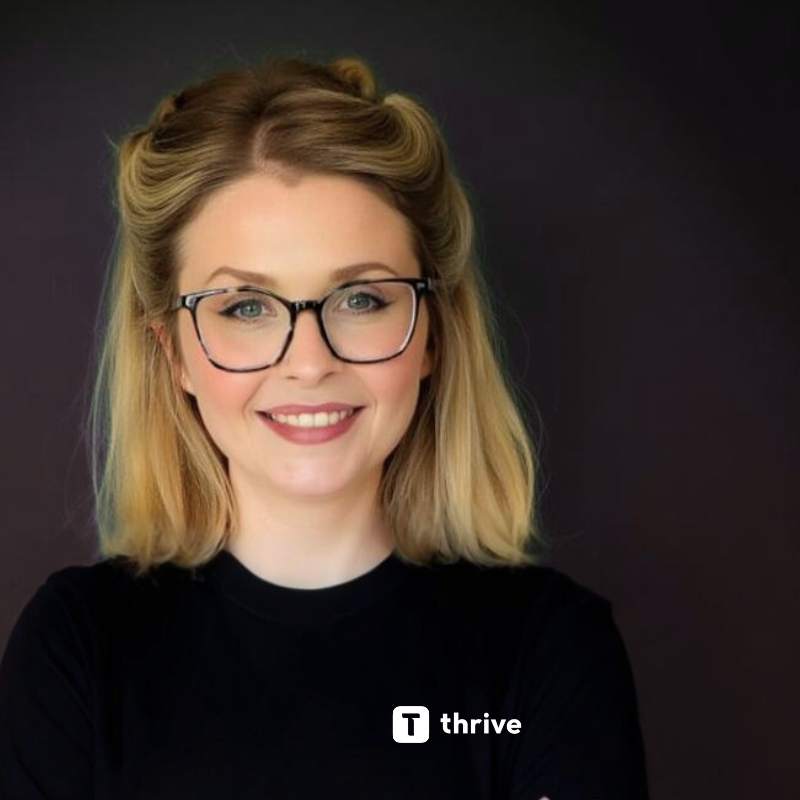How to use AI to rebuild human connection at work
The most successful organisations will use AI to amplify human connection in the workplace. Because the future of work isn’t man or machine, it’s both.

What if the very thing many fear (the machine, the algorithm, the code) became the spark that makes work feel human again? We’re not talking about AI taking over jobs. We’re talking about AI stepping in, quietly, and cleverly, to help us connect in ways we’ve lost over recent years.
Because, if we’re honest, the workplace is still in recovery mode. Five years on, COVID’s shadow still hasn’t fully lifted, and we’re not sure it ever will. Team meetings have become black squares rather than faces. Spontaneous conversation, and hallway brainstorms just feel like artefacts of another era.
And just when we started finding our rhythm again, AI arrived. Cue panic stations.
Our hot take is this: AI isn’t the enemy of connection. It might just be the key to saving it.
The connection crisis and why AI might fix it
Call it what you want. Burnout, bandwidth, disengagement. Underneath it all sits one truth: We’ve lost the rhythm of human connection at work.
- Loneliness is rising: Since the pandemic, 58% of workers socialise less, and 52% report increased feelings of loneliness.
- Leaders are feeling it too: Over half of people managers say they struggle to offer human connection in hybrid teams.
- Relentless digital noise: Employees spend nearly 88% of their time reading, writing and responding to messages or talking in meetings – but not really connecting.
- Attrition dwindles: When people don’t feel seen or valued, they leave. Connection goes beyond being a nice-to-have and becomes a retention strategy.
The result is a culture stretched thin and teams surviving, not thriving.
And this is where AI can step in to be a quiet connector.
The AI paradox: It’s not replacing us, it’s reminding us of who we are
There’s a narrative that AI will make work cold, automated, and less human. But when used well, it does quite the opposite. It removes friction (the endless admin, data drudge, etc.) and gives us something in return: time and headspace to focus on the more complex stuff. It’s not about less humanity, it’s about more of it.
“The real power in technology lies in not automation, but in amplification. In how it lets us deepen the relationships that drive performance, creativity and belonging.”
How to use AI to power human connection
When designed right, AI becomes the connective tissue of modern work; the invisible layer that helps us see and support one another again.
Surface what matters fast with federated search
Work drowned in “pings” is simply noise. Use AI as an answer engine that pulls the right doc, decision, or context into the flow of work so every conversation starts with clarity.
Federated search connects every app, tool, and data source so your people can ask one question and get an instant, contextual answer. By connecting all of your apps and data sources, like your CRM, HRIS and more into something like a digital workplace, you bring everything under one roof.
Do that, and as information flows, there’s more space to connect.
Unbiased mentor matching
Left to chance (or calendars), people connect inside their bubbles. AI can reframe things like mentor matching so it’s purposeful, inclusive, data-informed, and scalable.
Using AI to match mentors, peers, or collaborators based on skills, goals, working styles etc, rather than on org charts, who you know, or who shouts the loudest creates more accessible and scalable peer learning.
Harvard Business Review calls this algorithmic equity, where you’re designing systems that expand opportunity, not narrow it.
But be sure to add in a last human mile, e.g. let a human approve the match at the final step, because the best matches also come from instinct, curiosity, and chemistry.
Scale connection without losing the soul
We all know that AI can support automation, removing a lot of the administrative burden of the workday. Leveraging things like generative AI for repetitive tasks can see productivity jump to as much as 30%.
But how to use it for powering human connection?
Here’s where it gets clever. Imagine AI systems that sense when engagement starts to fade. Sentiment analytics can pick up subtle cues, declining message activity, missed catch-ups, and lower interaction quality, before gently prompting a check-in. Not to monitor, but to notice. To nudge a conversation before disengagement sets in.
You can also design dashboards that visualise the quality of connection, not just quantity. Metrics like the diversity of someone’s internal network, how often cross-team conversation happens, or the average satisfaction of mentoring sessions which all offer a real pulse on belonging.
But this data shouldn’t sit in a spreadsheet; it should spark action. A leader might see that one department’s network is shrinking and schedule a cross-functional project. A mentor could be prompted to reach out when a mentee’s engagement dips. It’s not about replacing empathy with algorithms, it’s about giving leaders the insight to act more human, not less.
By using AI to scale the invisible fabric of relationships, you can create an organisation that’s not just faster, but kinder, more connected and alive with conversation.
Turn meetings into meaning
Meetings have often become a habit, not a highlight. Calendars are full, but conversations feel hollow. Research shows that 71% of managers think meetings are unproductive, which equates to hours spent together without getting anywhere.
AI can help with that – not by replacing the meeting, but by transforming what happens before, during, and after it.
Before the meeting, AI can surface what matters most. The latest decisions, open questions, previous actions, and even relevant conversations from across your tools. This means people walk in with context, clarity and confidence – not confusion.
During the meeting, AI can capture notes and action points, meaning everyone can be present and listening in and contributing without worrying about who is taking notes. That way, they feel more energised and connected.
Design the human moment first
There’s a real opportunity to automate every touchpoint, but to make the important ones more meaningful with AI.
Start by mapping the moments that matter most. A manager's first check-in with a new starter, a mentor’s mid-point reflection, a team’s goal-setting session, or even a one-to-one where feedback becomes future-shaping. These are the points of truth in a relationship. The times people remember, and the ones that shape culture more than policy ever could.
Now imagine using AI to elevate those moments. Before a conversation, it can surface context (like recent projects, pulse survey data, or notes from earlier sessions) helping both sides show up and be prepared and present.
Consider building in prompts for meaningful questions, the kind that spark reflection and real talk, not small talk. Afterwards, it can summarise themes, capture insights, and gently nudge people toward next steps and learning resources to keep the momentum going.
The trick is to design for people, not for process. Start with the emotion you want someone to leave with, and work backwards. Then use AI to support the structure.
When we build technology around these moments, not the other way around, we get what we've been missing: meaningful human connection at scale.
Build guardrails that build trust
Connection only grows where trust lives, and when it comes to AI, trust starts with transparency. People need to know when AI is being used, what data it touches, what stays private. An AI Code of Care, will help to build that confidence. As the Partnerships on AI notes, openness about intent is one of the biggest drives of responsible adoption.
Keep your people in the loop. Let AI suggest, never decide. And review outcomes regularly to catch bias or unintended impact. Simple, consistent communication reassures people that empathy, not automation, sits at the heart of your culture.
Trust isn’t just a data issue and when people feel safe, they engage. They share ideas, feedback and moments that matter. And that’s where true connection begins.
Open new doors, every day
AI’s power isn’t limited to mentor matching, meeting prompts and information surfacing. It can also connect people in everyday moments.
By linking systems and surfacing hidden expertise, AI helps people find colleagues who’ve faced the same challenges or share the same goals. It can suggest introductions across teams or even spark conversations like “You and X worked on a similar project, fancy a chat?”
These small, smart nudges turn isolated work into connected work. They open doors to learning, collaboration and career growth.
Thrive: Where human heart meets AI muscle
At Thrive, we believe the next era of work isn’t man or machine, it’s both. AI should never replace the value humans bring to the table, it should make connection at work easier.
That’s why we’re building something new. Something never seen before. So much more than an LMS, but redefining the digital workplace. This is where the next chapter begins, and we can’t wait to show you what’s coming next.

